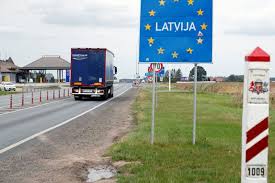First European ‘travel bubble’ ends as coronavirus cases rise in Estonia | Reuters
The first European pandemic “travel bubble”, created in May by Estonia, Latvia and Lithuania, burst on Friday, as Latvia said it was mandating a 14-day quarantine on everyone arriving from Estonia. Estonia has had 21 novel coronavirus infections per 100,000 population over the previous two weeks, according to the European Centre for Disease Prevention and Control, passing the 16 threshold set by Latvia for mandatory quarantine. Latvia, which has one of the lowest levels of infection in the European Union, has rejected the European Commission’s recommendation to raise threshold for quarantine to 25 new cases per 100,000 population over two weeks. “This is a decision I am not ready for … I do not think that society is ready to allow more people to enter Latvia,” Prime Minister Krisjanis Karins said on Friday, according to LETA agency. Neighboring Estonia, Lithuania and Finland all raised the threshold this week, keeping travel between them possible. Sales of international bus tickets already fell by 20% last week, as people were getting worried the bubble could burst, said Rait Remmel of Lux Express, a regional bus company. “The demand recovered over the summer, but now people obviously will not travel much, and we will need to cut our routes”, he said. The crisis has been resurging towards the end of the summer elsewhere in European Union too, with the sharpest spikes reported in France and Spain. The global death toll from the coronavirus passed 900,000 on Wednesday, as worldwide cases topped 27.7 million, according to a Reuters tally. In a bid to curb the rising spread of the virus, Lithuania reintroduced the requirement to wear facemasks inside public buildings and announced restrictions on public gatherings. “We relaxed and began travelling, gathering together, interacting more. Since the virus was never totally exterminated, so it began spreading”, Lithuanian Minister of Health Aurelijus Veryga said. Estonia, Latvia and Lithuania created the first common travel space in the European Union on May 15 in a bid to jump-start economies.












